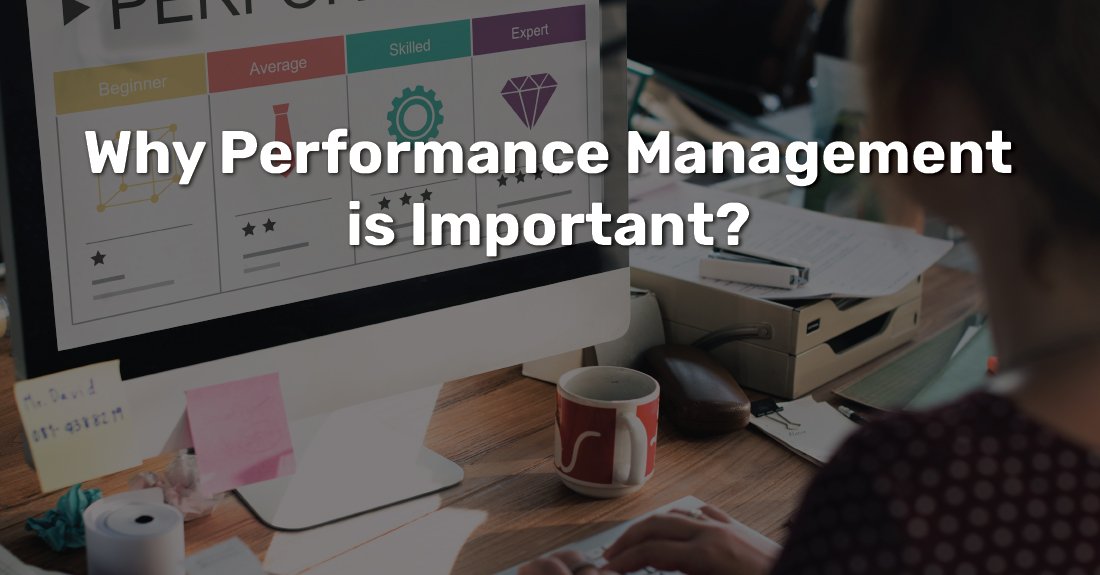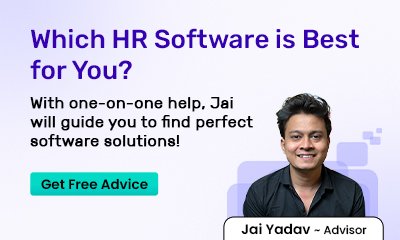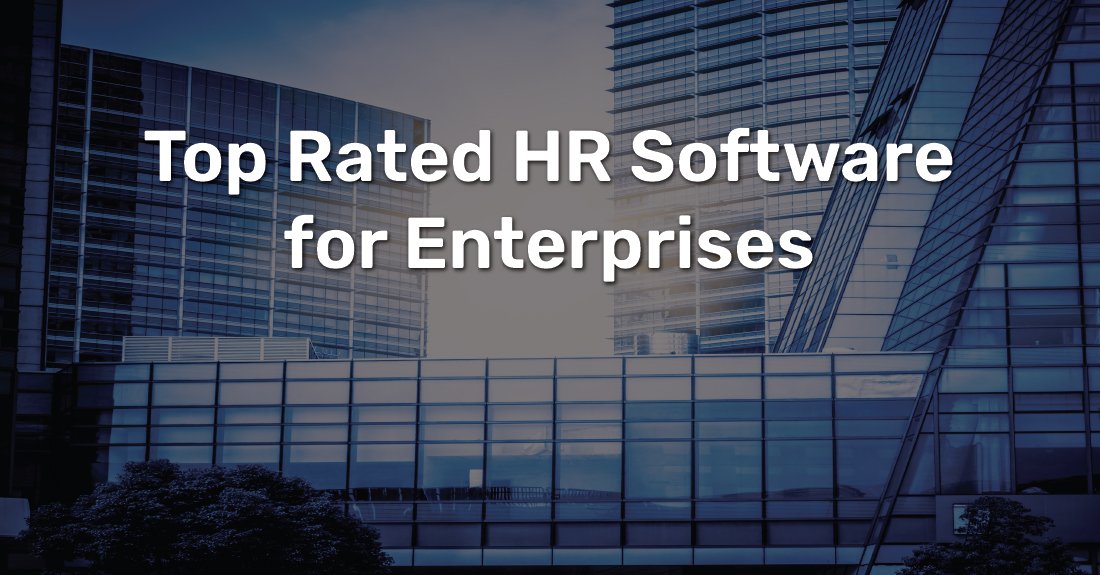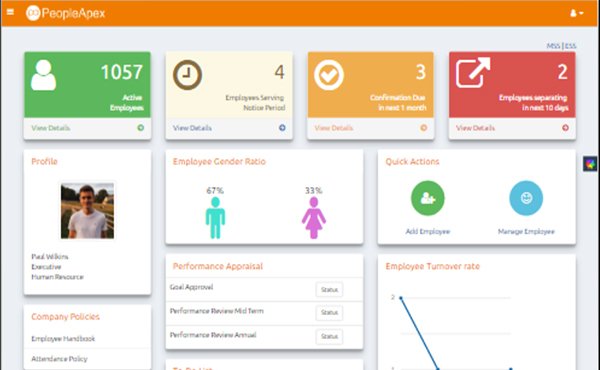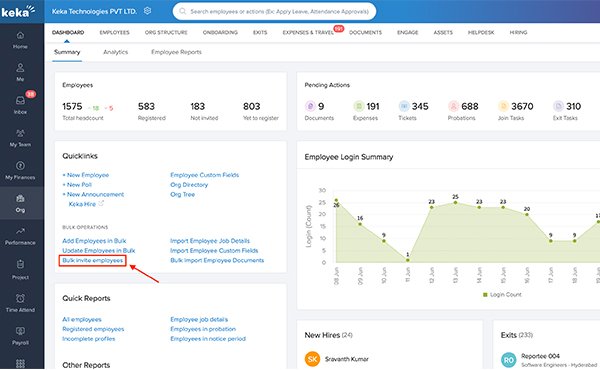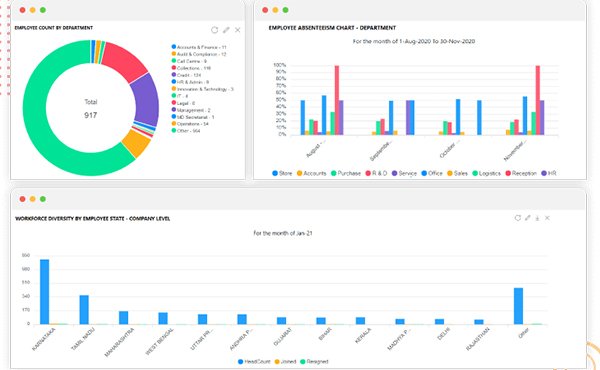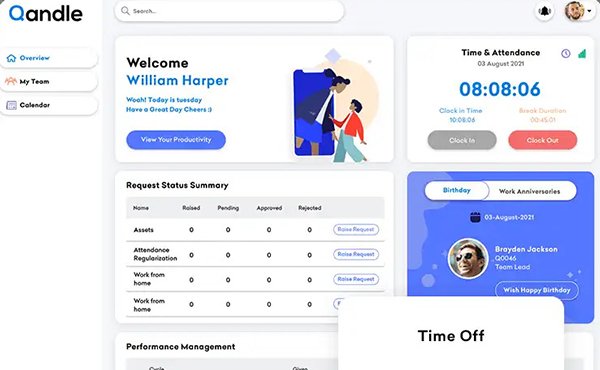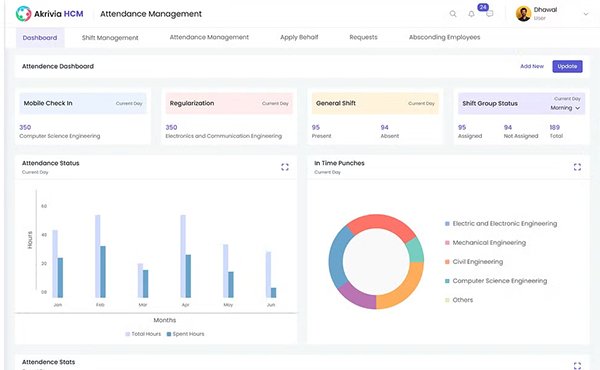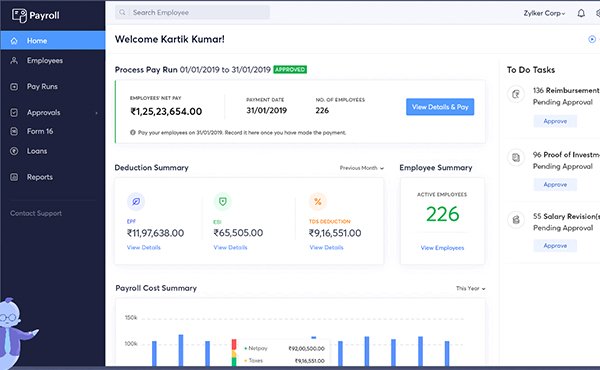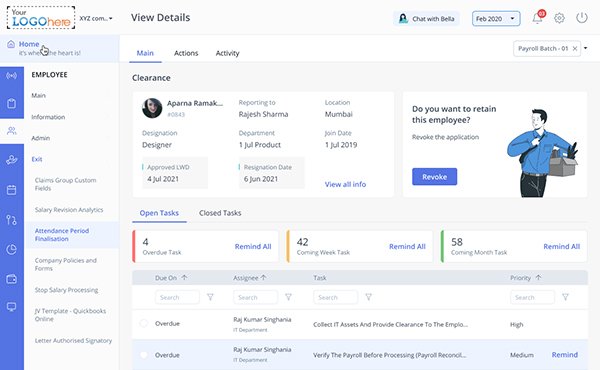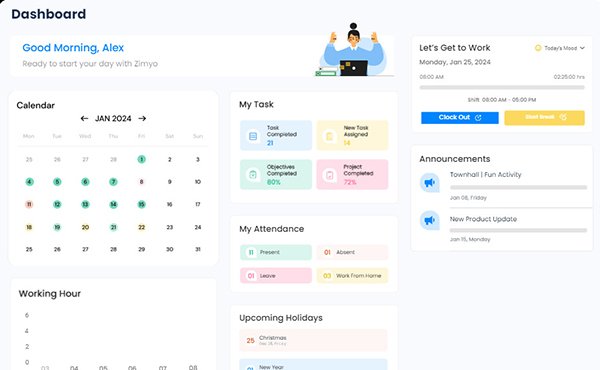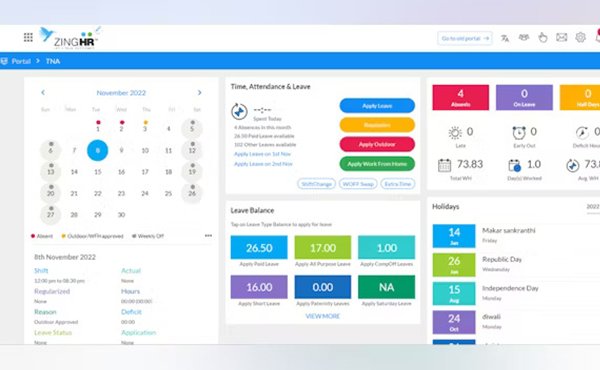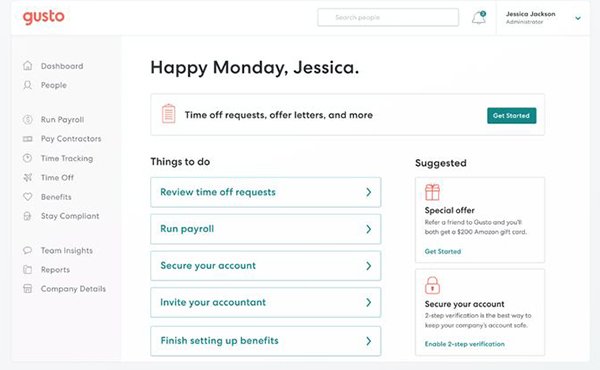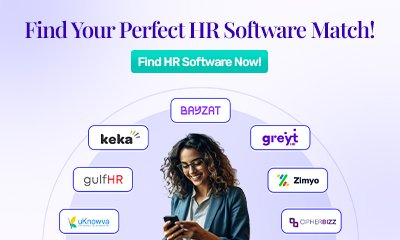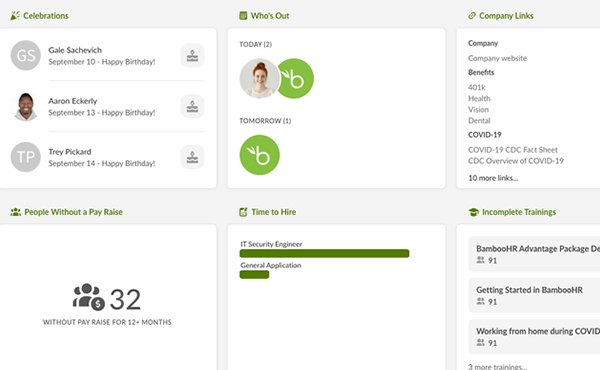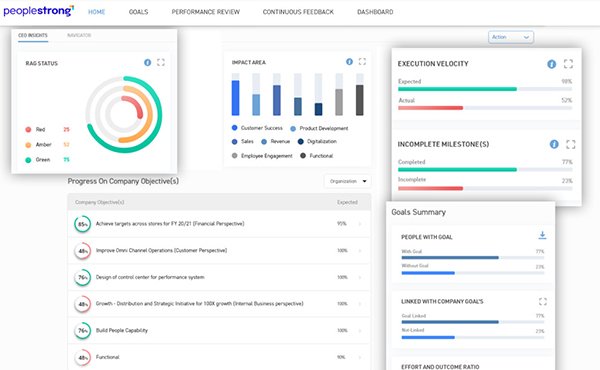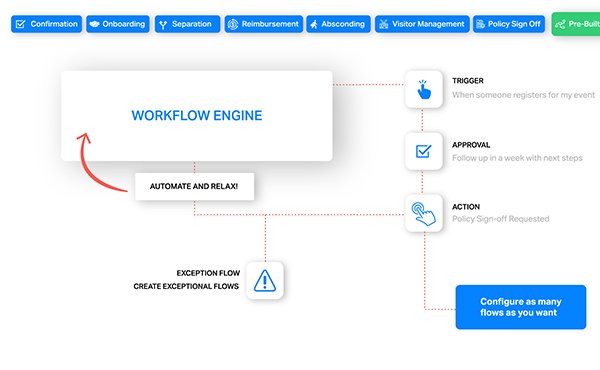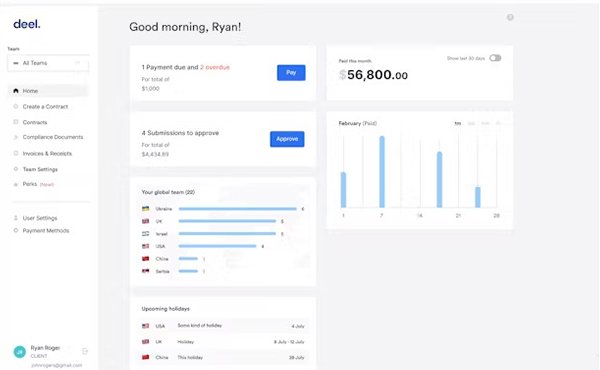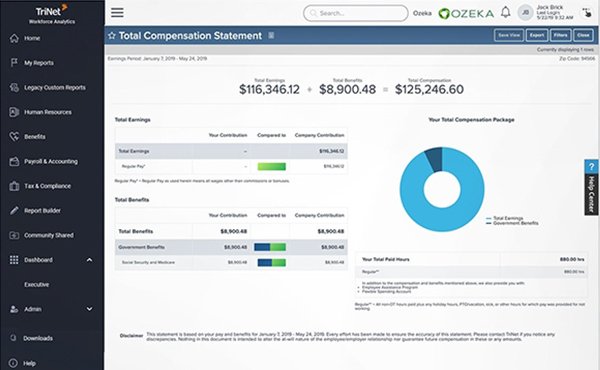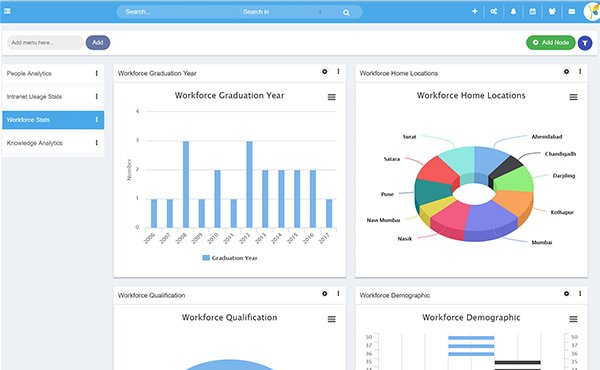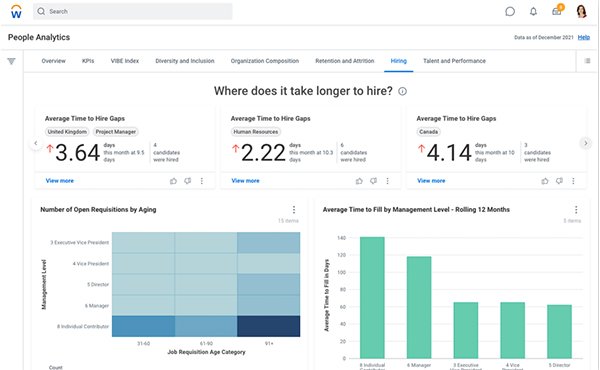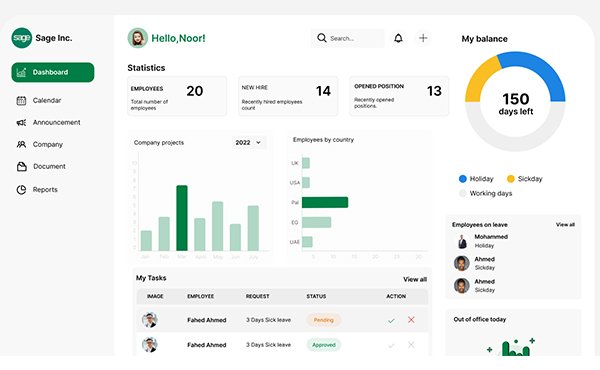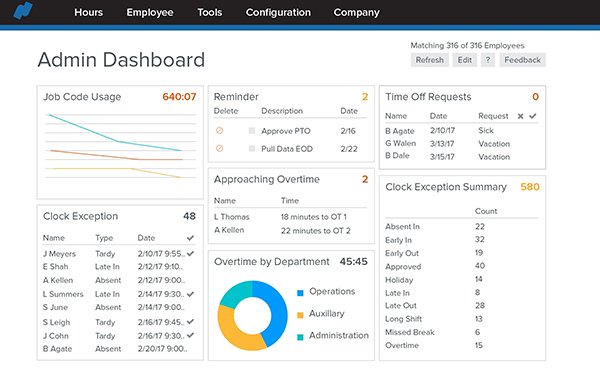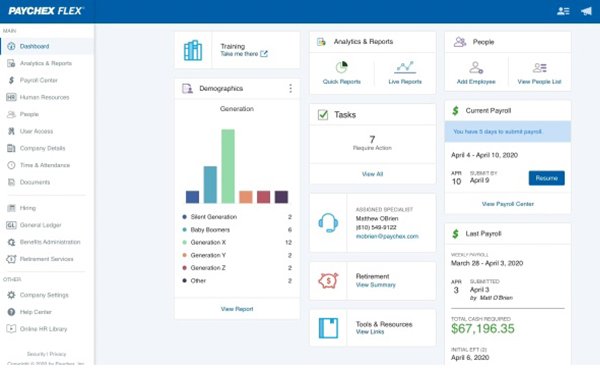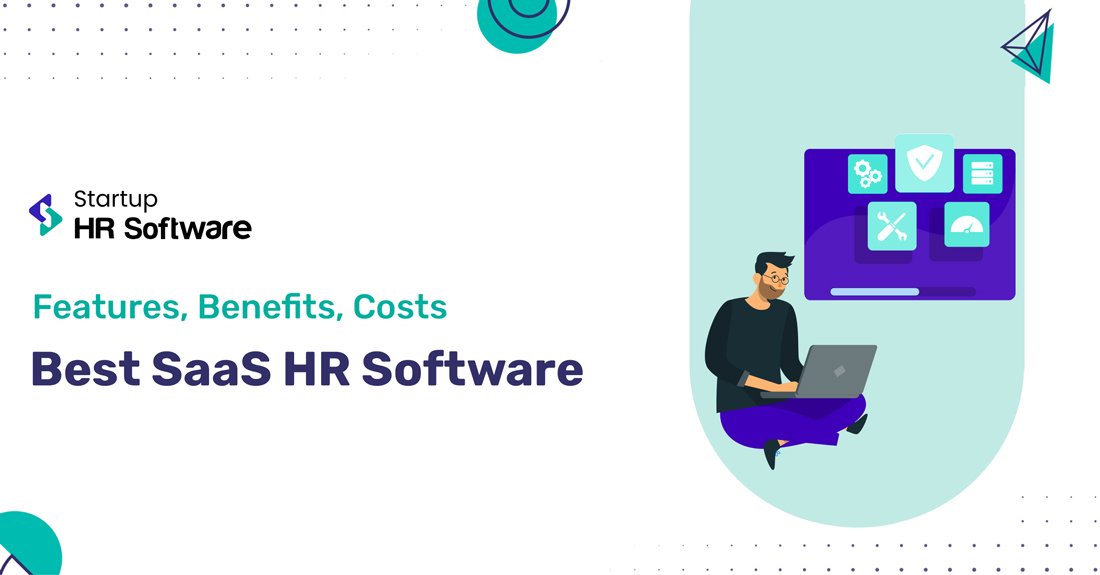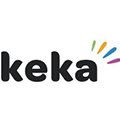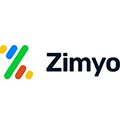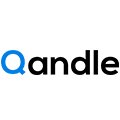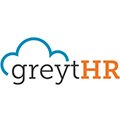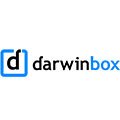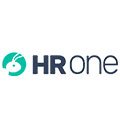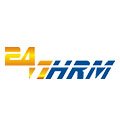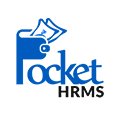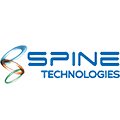Performance control is a set of approaches that assists employers in monitoring and analyzing employees’ overall performance over a specific duration. It creates an surroundings where employees can maximize their ability, carry out higher of their roles, and boost their success. Conversely, employers can smoothly examine and fee employees’ work. Performance control improves organizational strategic desires’ success and promotes a high quality environment for worker growth.
As per Verified Market Research, overall performance management became valued at USD 10 billion in 2023. With the upcoming developments, it will pass USD 20.6 billion with the aid of 2030, in which the CAGR might be 12% at some stage in the forecast length 2023-2030.
What is Performance Management System (PMS)
The performance management system is a cloud-based software that comprises various technologies and methodologies to monitor and manage the performance of employees. Performance management should be fair, measurable, and aligned with the organizational goals and objectives.
Its purpose is to have a systematic feedback mechanism where employees are self-aware of their contribution, identify performance issues & skills gaps, etc. The managers use the performance management system to monitor, document, and evaluate employee performance. Moreover, it creates transparency, and timely feedback and enhances employee engagement.
Employers in SMEs and large enterprises are quickly switching from the traditional annual appraisal-based way of managing employee performance to the continuous performance management model (CPM). The CPM model allows frequent meetings, ongoing feedback, and one-on-one casual discussions to help employees stay on track with organizational goals.
What Is the Scope of Performance Management?
Human resource management is the root of performance management. It is important for the performance management system to be aligned with the overall organizational structure. Rather than being viewed in isolation, it should be viewed as an integral part of the organization as a whole. A performance management system ensures that all departments within an organization work effectively, which is the fundamental aim of performance management.
It covers everything an employee does at work, from an organization’s vision and goals to their interests, the tasks they are assigned, their performance against the standard, and the employer’s intentions, interests, and company goals.
Since the framework is so extensive, we must view it in two halves in order to understand it effectively.
Corporate performance management (CPM): An organization’s performance goals are defined by a series of managerial strategies. To make better growth decisions, it needs to design a working strategy, implement it, analyze its results periodically, and use the information. There are numerous tools for managing corporate performance, such as budgets, product visions, and business models.
People performance management (PPM): PPM is the most challenging aspect of performance management since there are so many people and goals to achieve. As part of this process, all factors must be aligned in a way that perfectly fits an organization’s overall goals.
Performance management scope
The PPM system will:
- Verify the selection process for new employees
- Identify training requirements for employees
- If necessary, provide feedback on performance and constructive criticism
- Identify employee rewards and benefits
- Make a decision regarding when and how you will promote or demote
The performance management cycle covers all of these aspects adequately. As opposed to the traditional model of a year-long event, this is now a more continuous one with broad, measurable goals that can be reviewed on a regular basis. There are four phases to it.
- Planning
Both CPM and PPM are involved in the planning phase. In order for management to determine the yearly or quarterly goals, the team first determines the organization’s overall goals. In this process, the roles and objectives of the employees are defined and shaped according to their level. In addition, it allows employees to set their own personal development goals. Goals are set during the planning phase. It’s easy to get the most out of this phase if you follow the SMART guide. It is simply a matter of making sure goals are Specific, Measurable, Achievable, Relevant, and Time-bound.
- Monitoring
During this phase, performance management is more effective if it is conducted regularly. According to studies, 63% of Gen Z employees want regular feedback from their managers instead of an end-of-year review. Monitoring progress, roadblocks, problems confronted and overcome, ideas, etc., is a function of management. It is also possible to redefine goals set during the planning and monitoring phase.
- Reviewing
The performance of the organization must be evaluated at the end of the cycle. Did goals get met? Is there a waste of company resources? What was the efficiency of employees in achieving this goal? Is there a way to modify this process to produce better results? Were employees able to deliver an outstanding performance or demonstrate leadership qualities? Monitoring is necessary for the review phase to be successful.
- Rewarding
Without a doubt, this is a critical phase that should not be ignored. In the long run, it’s crucial not just for employees, but also for employers. Better performance is motivated by a reward system.
Benefits of Implementing Performance Management System
Below are the major benefits of performance management systems.
- Clearly Defined Goals and Expectations: Establishing clear objectives for employees, fostering direction and focus.
- Enhanced Efficiency and Targeted Selection: Improving operational efficiency and making informed decisions in talent selection.
- Promotion of Job Satisfaction and Autonomy: Empowering employees, enhancing job satisfaction, and promoting autonomy.
- Increased Motivation and Retention: Boosting employee motivation and enhancing retention rates.
- Objective Decision-Making and Bias Reduction: Facilitating unbiased decision-making based on objective performance data.
- Effective Talent Nurturing: Developing and nurturing talent effectively within the organization.
- Identifying Potential Risks: Identifying and mitigating potential risks associated with employee performance.
- Improved Organizational Alignment: Aligning individual performance with organizational goals and strategies.
What Is Performance Management’s Role in an Organization?
Human resource performance management plays a crucial role in organizational success. It has been shown that performance management is strongly correlated with high-performance organizations in a recent study. The performance management function in an organization plays several roles:
- Improving employee performance
If performance management is not implemented, employees will gradually reduce their effort. It is important for a system to motivate employees in order to achieve the highest levels of performance.
Every mixture will always have at least one or two individuals who stand out. HR performance management is the process of recognizing, identifying, and cultivating high-quality performers and employees. This will allow these employees to be assigned more detailed tasks that directly contribute to the growth of the company.
- Developing strong leaders
The quality of leadership can be acquired as well as inborn. An effective performance management process will enable leaders to demonstrate leadership qualities like team management, goal setting, achievement, harmonizing work efforts, etc. As a result, individuals are empowered to become leaders and take on responsibility, ensuring high performance through self-sufficiency.
- Remove weak links
Organizations can also benefit from performance management by eliminating weak links. A team or organization is only as strong as its weakest link, according to Billy Graham.
It is possible to identify the person who is bringing the team down through performance management. After identifying them, constructive feedback can be provided, along with training and skills development, among other corrective measures. Performance management systems provide objective indicators of futility if these measures prove ineffective. In such cases, it is the responsibility of human resource management to legally terminate the employee’s employment contract.
- Ensuring employee engagement and satisfaction
In performance management systems, the employee is just as important as the employer. As a result of its proven benefits, employee engagement is a buzzword in human resource performance management. The more engaged your workers are, the more productive they will be. It is also important to keep employees as satisfied as possible. In addition, this includes job satisfaction and remuneration as well as better working conditions.
- Providing employees with a defined career path
The majority of high-performance employees will not remain comfortable at the same career level for many years. It is more important than ever to progress your career. Defining career plans and how to achieve them falls under performance management and cannot be overlooked. Employees who are high performers may look for greener pastures if career growth opportunities aren’t provided to them.
- Motivating and coaching employees
HRM performance management ensures employees are motivated and coached. This role is played by departmental managers and team leaders. However, it is only through evaluations and appraisals that we can determine whether a department head positively impacts his members’ motivation.
A performance management system plays a role in this. The success of a performance management system depends on how well feedback, encouragement, and criticism are given, as well as how well employees are motivated.
- Improving the organization’s bottom line
The last benefit of performance management is that it helps companies improve their balance sheets by encouraging and ensuring higher performance. Increasing productivity, coaching non-performers or removing them from a company allows the overall system to function better, which affects revenues directly.
Who uses Performance Management Software?
Managing the performance of employees is a crucial aspect of every company to ensure effective work management and higher organizational productivity.
The performance management system should be used by everybody in the company, regardless of their job profile, level, or salary. Employees, managers, and other HR professionals use performance management software.
The performance management system helps employees to work according to the performance parameters set by their managers. It specifies the gap between their current performance and the expected performance.
You can check the areas where you are lagging so that you can take necessary action within time for overall improvement in your performance.
Managers use performance management software to set the expected performance parameters and track their team’s overall performance. They are also responsible for ensuring that every employee diligently participates in the process to achieve desired performance results.
Moreover, they provide regular reviews and feedback on the employees’ performances. HR professionals use the performance management system to define specific HR processes.
They generally work closely with employees and their managers to cross-check that everything is working as per the plan stated in the performance management software.
HR experts conduct regular assessments to dive deep inside the performance management software to ensure the fairness of performance standards set for employees.
How to implement a successful performance management strategy
Performance management involves a structured approach starting with clear goal creation and communication. Then, it focuses on individual employee growth through tracking metrics that align with your overarching company goals. It also communicates progress in performance reviews.
Last but not least, it provides employee development resources to ensure that career advancement is aligned with the success of your organization.
Performance management plans go beyond aligning individual goals with departmental and organizational goals to quickly implement your organization’s overall strategy. In other words, it is how you identify the tangible results of your visualizing and planning efforts.
Communication of these impacts to your team is crucial for introducing new performance management techniques, so IMD leadership learning experiences can enhance your inclusive leadership skills. By doing this, you will help everyone understand each other’s viewpoints.
The following are some key factors to keep in mind while implementing these processes.
Align employee actions with organizational goals:
By doing so, employees are able to connect their daily tasks to the broader objectives of the company. As a result, every action contributes to the overall success of your company. As well as improving employee engagement, it promotes a sense of purpose and unity among your employees.
Having regular check-ins is an excellent way to accomplish this. Identify ways in which individual efforts contribute to company goals and get a better understanding of how micro and macro levels of work are interconnected. It provides employees with a framework to align their decision-making with your strategic vision and promotes transparency.
Specify performance outcomes:
In order to attract the right talent and define boundaries, these performance outcomes are often included in job descriptions.
Use the SMART strategy to break down big-picture, visionary business goals into tangible, achievable employee goals.
- Specific: It’s clear and unambiguous, telling you exactly what to do.
- Measurable: It’s quantifiable, so you can track progress.
- Achievable: It’s within reach, given an employee’s current skills and resources.
- Relevant: It’s aligned with company values.
- Time-bound: It has a specific deadline to keep employees focused and motivated.
Meet regularly and personally
By connecting overall performance with recent actions, continuous performance management and regular check-ins encourage accountability. There is no better opportunity for growth and learning than this.
Imagine the challenge of distilling an entire year’s worth of employee reviews into a meaningful employee performance appraisal. It might be difficult for the employee to understand all that feedback without having any recent context.
By creating customized development plans tailored to each employee, you will be able to identify their strengths and weaknesses, as well as get a clear grasp of their goals and identify the best opportunities for their growth.
Common challenges in performance management and their solutions
Ineffective metrics
In order for your team members to succeed, you must align their performance indicators with your company’s goals. As an example, Amazon’s performance monitoring was so strict that employees were not allowed to take bathroom breaks. Due to a lack of consideration for the human element, the company’s elaborate employee tracking system was ineffective.
Amazon’s employee tracking system tracks metrics such as how many items are picked or packed per hour. In order to improve quality of work, it would be more effective to focus on metrics that measure it. An example would be the accuracy of orders or the number of complaints from customers.
Adopting the latest technology
Many organizations use performance management software to track certain KPIs automatically, but this can be a steep learning curve for team members. Additionally, it may seem unnecessary, time-consuming, or unfair to them. In order to prevent digital transformations from becoming digital disruptions, organize training sessions to ensure everyone understands why the technology is being implemented. By doing this, they’ll be able to gain a better understanding of how it works and how it benefits the company as a whole and its employees.
Lack of transparency
When employees aren’t aware of why revised performance standards were introduced, it can feel like micromanagement. The last thing anyone wants is to feel that their performance is being scrutinized without a valid reason. It is also difficult to motivate employees to meet performance expectations due to this lack of transparency.
When introducing a new performance management process, announce it in advance and explain why there will be a change. By doing this, everyone will be on the same page. Describe impacts on employees’ workflows, their roles, and how these changes contribute to the goals of the company.
Key Components of a Performance Management System
The following information includes representation of the five components and descriptions of each:
Planning: Setting clear and achievable goals that align with organizational objectives, providing employees with a road-map for their work and growth.
Monitoring: Keeping track of how employees are progressing towards their goals, giving timely feedback, and making adjustments to improve their performance and results.
Developing: Investing in employees’ skills and abilities through training, mentoring, and opportunities for professional growth, encouraging ongoing improvement and adaptation.
Rating: Assessing employees’ performance using predetermined criteria and goals, identifying strengths, areas for improvement, and alignment with organizational standards.
Rewarding: Acknowledging and rewarding exceptional performance and accomplishments, reinforcing desired behaviors, and inspiring employees to succeed in their positions.
Importance of Performance Management System
Here is why the performance management system is essential:
Increases employee retention
Employee turnover has been the biggest worry among employers, primarily due to dissatisfaction with work. The performance management system overcomes this problem by acting as a backbone and providing much-needed support to the employees when they feel unmotivated.
With the help of a performance management system, employees get a clear purpose and career path for their individual growth. Moreover, it aligns them to work according to the company’s mission, vision, and values, encouraging them to perform better than yesterday.
As soon as they feel they belong to the company, employees consider the company’s problem by taking accountability for their performances. As a result, they work hard day and night to make the organization a better place, leading to their retention for years to come.
Boosts employee engagement
With the help of a performance management system, you can conduct regular feedback sessions, training programs, and recognition events and take care of employee needs. You can also add some personal & future growth opportunities for employees during the performance assessment.
It makes employees feel valued, belong, and supported to work better than before. Due to such a motivational experience, an employee’s overall morale increases, leading to employee engagement.
As a result, they feel 10x more satisfied with their job, which would eventually increase their productivity.
Provides clarity in the organization
One of the significant reasons behind non-performing employees in the company is needing more clarity of their job profile, roles & responsibilities. They aren’t aware of what is expected of them and what they are supposed to do, so they waste working hours.
With the help of a performance management system, you can clarify where employees stand currently, what organizational expectations are, and what can be done to fill that gap strategically.
Once the employees get this clarity, ask them to segregate the long-term goals into quarterly, monthly & biweekly goals to monitor their performances better.
Rewarding good performance
Everybody in the universe feels excited, happy, and motivated with the regular rewards & recognitions. Whenever an employee performs well, achieves even the smallest of goals, gives rewards to show the company’s love & affection towards them.
It will make employees belong to the company like a family and will encourage them to work even better with every passing day.
The rewards include Amazon vouchers, gift cards, incentives, paid holidays, a short trip, complementary offs, a lunch party, etc. When rewarded through these instruments, good employee performance reinforces them to maintain consistency and persistence in their work and make it ten times better.
Continually monitoring performance
The performance management system allows regular monitoring of an employee’s performance. Continually assessing an employee’s performance and giving them feedback accordingly helps employees stay aligned with the organizational goals.
Such a performance is measured with the key performance indicators (KPIs). It talks about the quality and efficiency of employee’s work. The data stored in the software speaks about the overall performance graph of an employee.
With the help of this data, superior managers can filter the employees eligible for incentives, promotions, and recognition, as well as the employees who need massive improvement in their work.
It represents their strengths, weaknesses, areas of improvement, and how much gap exists between their current performance and the expected performance. Once detected, this performance gap can be resolved within time through various training sessions to bring employees back on track.
Measure performance accurately
When measured accurately, the performance of an employee helps in the fair distribution of wages & making crucial decisions. It ensures that deserving employees get their benefits through incentives, gift vouchers, promotions, and other recognition & rewards. Such data-based accuracy, at the same time, helps to detect the non-performing employees in the company.
The companies can save their monetary & non-monetary employee benefits by detaining these employees from availing such benefits. They can be further trained to perform better in the future.
The performance of employees can be measured in the following ways:
- Define individual employees and the company’s objectives.
- Select the actionable performance metrics in the form of quantitative or qualitative indicators.
- Collect the raw information in the form of employee performance data through observations, surveys, feedback, ratings, punctuality, etc.
- Analyze the data & declare results by interpreting data in a meaningful manner.
- Review the employee performance for feedback based on analyzing SWOT (strengths, weaknesses, opportunities, and threats)
- Adjust the performance indicator plan for performance optimization & schedule training to improve employees’ skills.
Planning and goal setting
Use a performance management system to set out a clear plan regarding the performance of every employee. The software helps plan the qualities, expertise, and skills every employee should have to meet organizational goals.
This way, you can assign the correct daily tasks to every employee to ensure all their duties and responsibilities align with the organizational goals and mission. The performance management system is also essential for setting realistic, achievable, actionable employee goals.
It makes employees engaged and dedicated to striking better outcomes & enhanced productivity. Ensure that the individual employee’s goals align with the departmental and overall organizational goals. These objectives you set for the employees should be SMART as mentioned below:
- Specific
The objectives should be specific, explicit, and understandable regarding what’s expected of an employee.
- Measurable
The objective and progress graph of an employee should be measurable. Moreover, it should be easy to assess, evaluate, and provide quick results regularly.
- Agreed/Achievable
The objective should be achievable within a set time frame and reasonable enough for an employee to accomplish.
- Realistic/ Relevant
The objective should be realistic as per the long-term organizational goals and not hypothetical or based on assumptions. It should be within an employee’s capability, or else it’ll act as a de-motivating force for them.
- Time-Based
A precise time to accomplish the goals should be stated to the employees. Without a time constraint, employees will feel directionless and unable to achieve it anytime soon.
Providing performance feedback
Implementing the 360° feedback system in the company can drastically enhance the performance of employees. It can be done through peer-to-peer feedback, external stakeholders, senior manager ratings, etc.
Employees need guidance on what they are doing right and wrong and how to become better versions of themselves. Pointing out the mistakes at the right time is crucial to ensure the company’s success, as the employees will keep repeating the same mistake again & again, lowering their performance graph.
Conducting a performance feedback session can help employees assess their performance graph and correct it wherever required. As an employer, you can offer constructive feedback to the employees & conduct additional training & learning sessions to improve employees’ performances.
Appreciate employees’ work
Imagine working hard day and night by putting your heart & soul into the work and getting no appreciation. How discouraging would it be? Doesn’t it? Let’s solve this problem with the help of an effective performance management system. It is possible by appreciating employees for the most minor achievements, such as working on weekends, hitting targets before deadlines, taking minimal to no leaves, etc.
When you understand employees, they feel a part of the company and are urged to work even better daily. In the very same way, they might need more appreciation to achieve milestones. Appreciate employees one-on-one, in front of the team members and superiors. Here is what timely employee appreciation would lead to:
- Boosts employee morale
- Strengthened workplace relationships
- Enhance productivity
- Increase chances of retention
- Enhance employee engagement
- Feels valued in the company
Motivate the employees
“Motivation is an energy drink for the lethargic employees.” We are human beings, and we can’t function without a purpose and the right motivation provided at the right time.
Henceforth, regularly motivating employees through several intrinsic and extrinsic factors can significantly change their productivity level and commitment to the company.
This way, they will be punctual, engaged, and participative and go beyond their capacity to hit the targets. Ensure each employee feels motivated and belongs to the company through various things as mentioned below:
- Supporting them to achieve individual and shared goals
- Strong peer and manager relationships
- Making them feel important through different responsibilities
- Involving them in critical decision-making sessions
- Conducting employee empowerment activities
- Offering several career development and growth opportunities
- Providing them with earned leaves in times of need
- Giving recognition earned by them
- Attractive compensation and benefits
- Maintaining a healthy corporate culture
Development and training
The performance management system ensures timely employee development and training programs. Such programs allow employees to upskill themselves with the latest news, tools, and technologies. The activities conducted during these training and development sessions greatly enhance employees’ skills, knowledge, and intelligence. During these sessions, employees also get clear instructions and guidance from the professionals on improving their current performance and making them better in the future. It makes employees smarter, and as a result, they can use such smartness to enhance the individual and overall performance of the company. It’s a ladder for employees to quickly experience career growth and salary hikes. As a whole, it improves the company culture and heightens the chances of employee retention.
Define and describe each role
Various employees are hired based on their qualifications with no job orientation. It leads to employees working as per their wishes most of the time, outside the company’s favor.
It makes them feel lethargic and disengaged and wants to kill time in the office by taking massive breaks. Clear Job description and explanation play a vital role in ensuring an employee’s productivity. Most employees need clarification about what is expected from their jobs and how to perform them.
With the help of a performance management system, it gets easy to connect every employee with the things expected of them. Whether it’s the role of a sales executive, HR manager, legal consultant, or any other role, specifying the job meaning, duties, roles, and responsibilities, along with the explanation of how to implement them, brings a more significant positive change in employee performances.
Future Trends in Performance Management
Top 5 performance management trends for 2024:
1. Integration of AI and Predictive Analytics: AI-powered tools are evolving to help organizations predict performance trends, spot patterns, and offer data-driven insights for better decision-making. This trend improves the accuracy and effectiveness of performance evaluations and development plans.
2. Focus on Continuous Feedback and Coaching: There’s a growing move toward continuous feedback mechanisms instead of annual reviews to promote ongoing employee development. Tools for real-time feedback will become more common, supporting agile goal setting and performance improvement.
3. Emphasis on Employee Well-being and Engagement: Organizations are increasingly incorporating employee well-being metrics into performance management. This involves assessing and enhancing work-life balance, mental health support, and overall job satisfaction to boost productivity and retention.
4. Remote Work Adaptation: As remote and hybrid work models become permanent for many organizations, performance management systems must adjust. This means using technology for virtual performance assessments, improving communication, and ensuring fair evaluation processes across distributed teams.
5. Personalized Learning and Development: There will be a focus on personalized development plans tailored to individual career goals and skill gaps identified through performance assessments. This approach encourages continuous learning, skill enhancement, and career advancement aligned with organizational goals.
Conclusion
The performance management system is undeniably crucial in the organization. It empowers employees to participate in their performance & learning management actively. The company can also closely look at who are the performing assets & non-performing assets, what is working for the organization & what needs changes.
According to this analysis, they can create learning & development programs for the non-performing employees to perform better moving ahead.
It also helps analyze the achievable goals and what better motivational events can be conducted to reinforce bad performers to become good performers and decent performers to outperformers. The company’s overall success will also heighten as soon as the individual employee performance improves. Henceforth, ensure that your organization has a reliable performance management system.
F.A.Q
- What is a PMS system in HR?
- PMS stands for Performance Management System. It is a set of processes and tools designed to monitor, assess, and enhance an employee’s performance within an organization. It typically includes goal setting, performance appraisal, feedback mechanisms, and development planning.
- What is the aim of performance management?
- The aim of performance management is to improve the performance of individuals and teams within an organization to achieve organizational goals effectively. It involves aligning individual goals with organizational objectives, providing feedback and coaching, identifying development needs, and recognizing achievements.
- What is the full form of LMS?
- LMS stands for Learning Management System. It is a software application or platform used to deliver, manage, and track educational or training programs. LMSs are commonly used in educational institutions and corporate settings for online learning and development initiatives.
- How to manage staff performance?
- Managing staff performance involves several key steps:
- Set clear expectations: Define roles, responsibilities, and performance standards.
- Monitor performance: Regularly assess and track employees’ progress towards goals.
- Provide feedback: Offer constructive feedback on performance, both positive and areas for improvement.
- Offer development opportunities: Support employees with training, coaching, and resources to enhance their skills.
- Recognize and reward: Acknowledge achievements and provide incentives for excellent performance.
- Adjust and improve: Continuously review and adjust performance management strategies based on feedback and outcomes.
- Managing staff performance involves several key steps:
